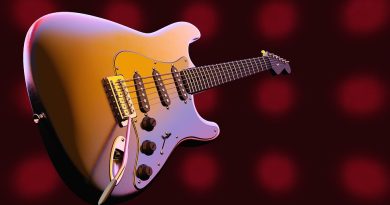Master the Fretboard: Guitar Practice Tips for Beginners
Master the Fretboard: Guitar Practice Tips for Beginners
Learning to play the guitar can be a rewarding experience, but it can also be a daunting task, especially for beginners. One of the key elements to becoming a proficient guitarist is mastering the fretboard. The fretboard is where all the magic happens, as it is where you form chords, play scales, and create melodies. In this article, we will explore some guitar practice tips for beginners to help you master the fretboard and become a better guitarist.
Understanding the Basics of the Fretboard
Before you can master the fretboard, it is important to have a basic understanding of how it works. The fretboard is the long, narrow strip of wood on the neck of the guitar where you press down on the strings to produce different notes. The frets are the metal strips that divide the fretboard into sections, and each fret represents a different note.
One of the first things you should do as a beginner guitarist is to familiarize yourself with the names of the open strings and the notes they produce. The standard tuning for a guitar is EADGBE, with the thickest string being the low E string and the thinnest string being the high E string. Knowing the names of the open strings will help you navigate the fretboard more easily and understand how chords and scales are constructed.
Practice Makes Perfect
Like any skill, mastering the fretboard takes practice. One of the best ways to improve your fretboard knowledge is to practice regularly and consistently. Set aside time each day to work on your fretboard skills, whether it is learning new chords, practicing scales, or playing through songs. Consistent practice will help you become more familiar with the fretboard and develop muscle memory in your fingers.
Start by learning the basic open chords, such as C, G, D, A, and E. These chords are commonly used in many songs and will help you get comfortable with forming chord shapes on the fretboard. As you become more confident with the open chords, you can start learning barre chords and more advanced chord voicings to expand your repertoire.
In addition to practicing chords, it is also important to practice scales on the fretboard. Scales are patterns of notes that are used in creating melodies and solos. Start by learning the major scale and pentatonic scale, as these are foundational scales that are used in a wide variety of music genres. Practice these scales up and down the fretboard to improve your finger dexterity and understanding of the notes on the fretboard.
Visualization Techniques
Another helpful tip for mastering the fretboard is to use visualization techniques. Visualization involves mentally picturing the fretboard in your mind and visualizing where the notes are located. By developing a mental map of the fretboard, you can improve your ability to navigate the neck and find the notes you need more quickly.
One way to practice visualization is to close your eyes and imagine the fretboard in front of you. Start by picturing the open strings and then visualize moving up the neck to the higher frets. Try to imagine where the different notes are located and how they relate to each other on the fretboard. This mental exercise can help reinforce your knowledge of the fretboard and aid in memorizing the note locations.
Learn Songs
Learning songs is a fun and effective way to improve your fretboard skills. Choose songs that you enjoy and that have interesting chord progressions or melodies. By learning and playing through songs, you will be able to apply the chords and scales you have been practicing in a musical context.
When learning a new song, pay attention to the chord changes and the notes being played. Try to identify the patterns and relationships between the chords and notes to deepen your understanding of the fretboard. As you play through different songs, you will become more familiar with the fretboard and develop a better ear for music.
Seek Guidance and Feedback
Finally, don’t be afraid to seek guidance and feedback from more experienced guitarists. Joining a guitar class or taking lessons from a professional instructor can provide you with valuable insight and guidance on how to master the fretboard. A teacher can help you identify areas for improvement and provide personalized instruction to help you reach your goals.
Additionally, playing with other musicians or jamming with friends can provide you with opportunities to practice your fretboard skills in a real-world setting. Collaborating with others can help you refine your playing and gain experience playing with different instruments and styles of music.
In conclusion, mastering the fretboard is essential for becoming a proficient guitarist. By understanding the basics of the fretboard, practicing regularly, using visualization techniques, learning songs, and seeking guidance and feedback, you can improve your fretboard skills and become a better guitarist. Remember that learning to play the guitar is a journey, and with dedication and practice, you can achieve your goals and become a master of the fretboard.






